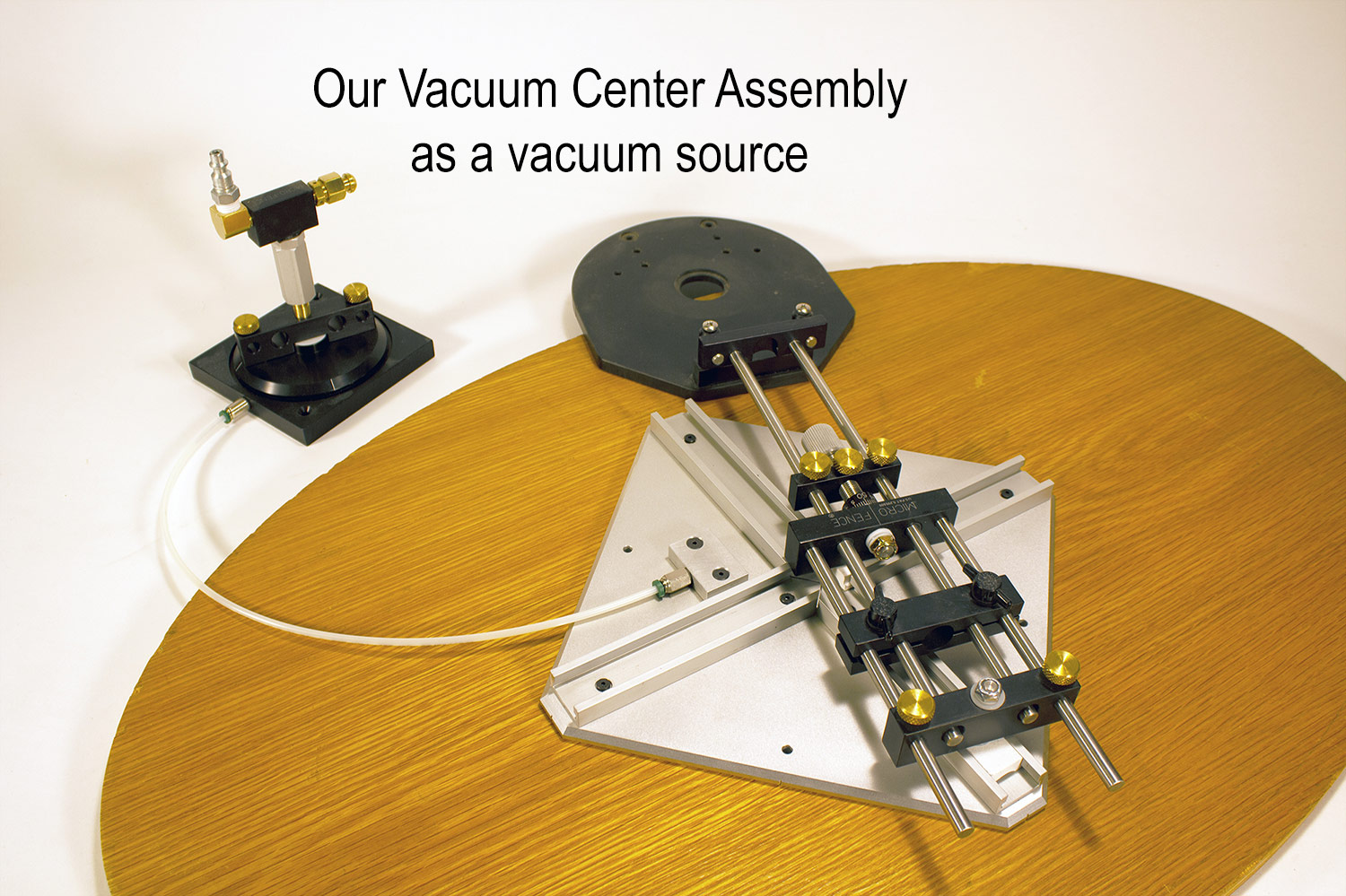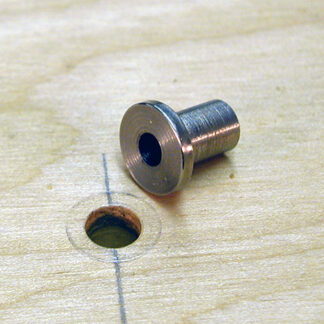Description
Excerpt from the instruction manual:
 (6″ tracks with 12″ guide shafts)
(6″ tracks with 12″ guide shafts)
Setting Your Ellipse Jig for The Size and Shape Ellipse You Wish to Make
The minor radius is determined by the distance from the Front Trammel Center Stud to the router bit. It can always be described as one-half of the difference between the major and minor diameters of your ellipse. For example, if you want your major axis to be 25” and your minor axis to be 21”, you’ll set the distance between centers at 2” (25”- 21” = 4” ÷ 2 = 2”). This is represented by the blue slide in the diagram above (Fig. 3).
Generally, we recommend setting the distance between centers first. Then the major radius can be set by positioning the router bit at the required distance (12 ½” our example) from the center post located in the Rear Trammel Bar (the blue or red slide in our drawing). This setting will be the radius (one-half) of the major axis.
This diagram of the Ellipse Jig shows the major and minor axes dimensions possible when set up with 6” T-Slot tracks and two pairs of 12” guide shafts. The router plate is positioned as close as possible to the top corner of the track (axes) plate.
The white slide represents the position where the Front Trammel Center Stud will pivot as the jig is turned. The distance from it to your router bit will be ½ your minor diameter.
The blue and red slides represent the smallest and largest differential settings that the 6” tracks will allow (2’’ to 6”). The blue and red ellipse shapes will result when either of those slide positions are set.
Remember: The differential (the distance between centers), will always be ½ of the difference between the major and minor diameters.
 (12″ tracks with 12″ guide shafts)
(12″ tracks with 12″ guide shafts)
Using Longer Guide Shafts:
24” Guide Shafts: add 1’ to the radii (2’ overall)
36” Guide Shafts: add 2’ to the radii (4’ overall)
Photos courtesy of Michael Fortune.



















